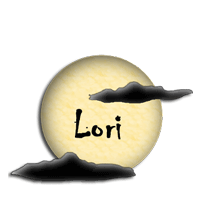When your child begins drawing pictures we all gush over the pictures even if they look like nothing. For some reason we understand the process of drawing progresses from scribbles to actual drawings. We do not feel the need to tell a child they are drawing a picture wrong. Well the process of writing is the same thing. Children have a natural progression of steps to learning to write. They goal is conventional spelling, but going through the steps will help your child gain confidence as a writer.
When your child writes something ask him/her to read it to you. I always say "you wrote it, you read it". I'm not saying there is never a time to spell a word for your child, I spell it when they are writing to others. If they are writing for homework, on a picture, or just for fun I do not spell for my sons (or the children I taught). I will help them stretch out the word to hear the sounds. This means saying the word slowly but still stuck together as a word. Focus on the consonants and do not correct them if they skip any. The process is on what they hear.
When I taught children to slowly sound out words I told them to pretend they are pulling an elastic. They pull it out slowly then "snap" it back together. Remember to always say the word slowly then again correctly. (tttabbbblll, table)
A great way to work on this is to help your child sound out words without writing. We do it a lot in the car. With Colby I focus on the beginning sound, what does the word dinosaur begin with? Blake does it all with writing now. He is able to sound out the words himself, with some help from time to time.
When children insist in spelling it correctly it means they've either been corrected too many times or are afraid of spelling it incorrectly. Once they've mastered spelling phonetically and begin to read more fluently they will begin to want to spell it as it is in books and can either find the word to copy, or will begin to develop their written vocabulary. The first step of this is teaching children to spell sight words, but this typically does not happen until kindergarten.
When you work on writing for the writing process you should not focus on the process of penmanship. This needs to be addressed at a different time. The process of learning to write neatly (don't get me started on correct form and doing it by the book, that's a different post), should be separate from learning to get your thoughts down on paper. When children write their brains work a lot faster than their hands so they will most likely not write as neatly as if they were copying text for penmanship practice. At this stage in life it is two very different skills. You should also not panic about letters written backwards, upside down or incorrectly in other ways as this too is developmental. (Dyslexia can not be diagnosed until second grade) If you want your child to write their sentence neatly, have them do it as an edit. We teach children to go back and read their work and edit it if necessary. You could have them go back read it and edit for error and then copy it over neatly for "publishing".
Any child can write. You just have to help him/her to see that their functional writing is acceptable. So next time you do a coloring project with your child, encourage him/her to write about what they drew and then read it to you. You will be surprised to see how proud they are of their own work.


No comments:
Post a Comment
I love to read the comments on my pages. Please share your thoughts and stories here!